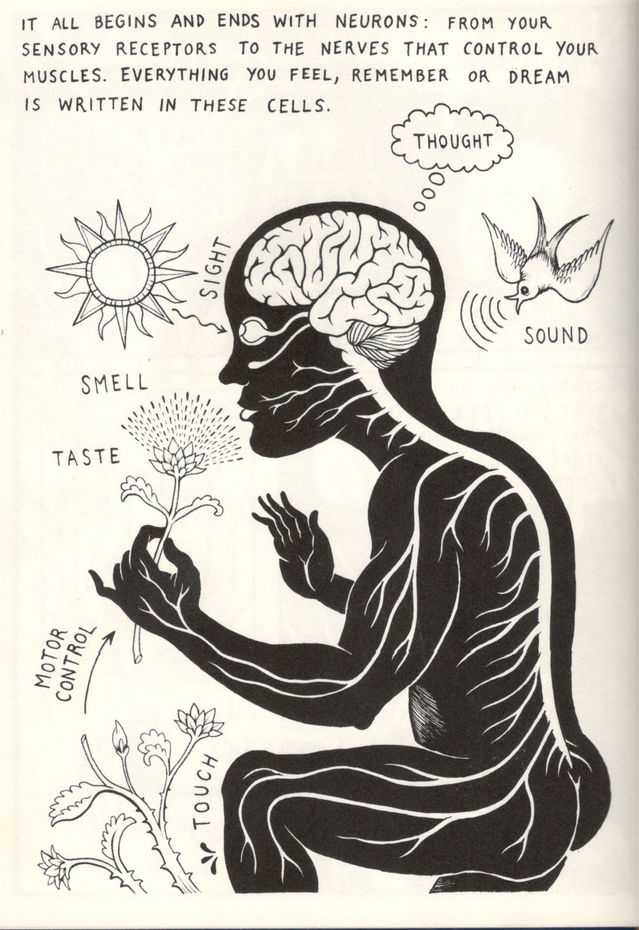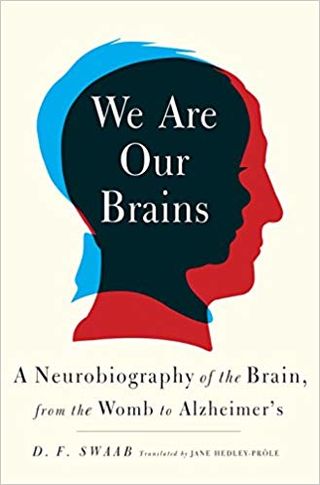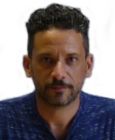Neuroscience
You and Your Brain
Are you your brain? The debate has outlived its usefulness but rages nonetheless
Posted September 11, 2018
In his book The Astonishing Hypothesis: The Scientific Search for the Soul (1995), Francis Crick, who won the Nobel Prize for his work with James Watson on the structure of DNA in the 1950s, suggested that many of us are deluded about who we are.

'You, your joys and sorrows, your memories and ambitions, your sense of personal identity and free will," he wrote, "are in fact no more than a vast assembly of nerve cells and their associated molecules.” Crick’s assertion initiated a vehement debate—Are you your brain?—that traveled through neuroscience into philosophy, anthropology, sociology, and literature. I believe the debate has outlived its usefulness, but it rages nonetheless.
The dramatic titles of two controversial books illustrate the debate: Neurobiologist Dick Swaab’s We Are Our Brains: A Neurobiography of the Brain from the Womb to Alzheimer’s (2008/2010) and American philosopher Alva Noë’s Out of Our Heads: Why You Are Not Your Brain and Other Lessons from the Biology of Consciousnes (2011). The “you are your brain” / “you are not your brain” debate is possible because of the paradox created by rapid advances in the neurosciences that raise more questions than answers.

The subtitle of Swaab’s international phenomenon of a book anthropomorphizes the brain. Swaab is going to tell us the life story of our brains: “Everything we think, do, and refrain from doing is determined by the brain. The construction of the fantastic machine determines our potential, our limitations, and our characters; we are our brains. Brain research is no longer confined to looking for the cause of brain disorders; it also seeks to establish why we are as we are. It is a quest to find ourselves.” But there’s a side effect to Swaab's rhetorical flourish. The theatricality of the literary device reminds readers that brains don’t in fact have biographies. People do. There's a difference.
Swaab finally admits his rhetoric outpaces his evidence. “The question I am most frequently asked,” he writes, “is whether I can explain how the brain works. That’s a conundrum that has yet to be fully solved, and this book can of course only provide a partial answer.”

Noë responds to assertions like Swaab’s—though his direct target is Francis Crick—with rhetorical confidence on par with the neuroscientists he critiques: “In this book I advance this truly astonishing hypothesis: to understand consciousness in human and animals, we must look not inward, into the recesses of our insides; rather, we need to look to the ways in which each of us, as a whole animal, carries on the processes of living in and with and in response to the world around us.” Noë's argument is perhaps not quite as astonishing as he suggests, but it is sensible and timely. You wouldn’t know it from Noë’s book, but similar ideas are also emerging from the neurosciences.
As Joelle M. Abi-Rached and Nikolas Rose argue in their book Neuro: The New Brain Sciences and the Management of the Mind (2013), the neurosciences “at their most sophisticated . . . are struggling toward a way of thinking in which our corporeality is in constant transaction with its milieu.” Many theoretical neuroscientists are doing just that—asking not whether we are our brains, but what roles our brains may play in making us who we are, along with our bodies as whole, our families, our cultures, and our physical environments.
Early in Who’s in Charge: Free Will and the Science of the Brain (2011), Michael Gazzaniga encapsulates the conundrum: “The physiochemical brain does enable the mind in some way we don’t understand and in so doing, it follows the physical laws of the universe just like other matter.” Gazzaniga’s concern is a social one. A strictly determinist interpretation of his claim that the “brain does enable the mind” might suggest humans are not responsible for our actions. To counter this idea, Gazzaniga argues that “the mind . . . constrains the brain.” In order to explain mind, he argues, we need to think in terms of layers, including “the micro world of subatomic particles” and “the macro world of you and your buddy high-fiving over the Super Bowl.” If mind is composed of tiny particles and social relations that do not obey the laws of physics, then it is a “dynamic system” requiring some mechanism to give it coherence. For Gazzaniga, that mechanism is the self, the responsible agent. In other words, you are not simply your brain.
Like Gazzaniga, Antonio Damasio and Joseph LeDoux both identify as materialist neuroscientists, but also like him, their theories do not simply reduce selfhood to brainhood.
In his book Self Comes to Mind: Constructing the Conscious Brain (2010), Damasio argues that consciousness arises when an “organism” interacts with “objects”—and in the process creates images of that object that alter the organism’s “map” of its own physiology and its relation to the world around it. The map, of course, is a representation, composed of neural networks but also what Damasio calls the “chemical bath” or “internal milieu” of bodies. Bodies regulate life through making patterns of meaning, but those patterns mostly elude consciousness.
LeDoux, the original author of the sentence, “You are your synapses,” has recently turned to anthropology to refine his explanation of the brain-self relationship. In his most recent book, Anxious: Using the Brain to Understand and Treat Fear and Anxiety (2015), LeDoux invokes Claude Levi-Strauss’s concept of bricolage to explain how fear and anxiety may be “assembled from nonemotional ingredients.” LeDoux includes among the items of social life “persons, objects, contexts, the sequence and fabric of everyday life.” He argues that “In the brain, working memory can be thought of as the ‘bricoleur,’ and the content of emotional consciousness resulting from the construction process as the bricolage.” While LeDoux’s focus is on the physiology of feeling, he does more than create an illustrative analogy when he casts working memory as bricoleur. He suggests that neuroscience benefits from sociological and anthropological theories of the self. Like Damasio, Ledoux is building a theory to account for the interplay of biology and culture in the making of self
In fact, most neuroscientits tend to be frank about the gap between their dramatic hypotheses and the available evidence. In The Tell-Tale Brain: A Neuroscientist’s Quest for What Makes Us Human (2011), V. S. Ramachandran articulates neuroscience’s epistemological limits and aims as an exciting motive for research, rather than a deficit. Following upon the allusion to Edgar Allan Poe in his title, he does so by way of an explicit analogy to mystery as a literary genre: “As heady as our progress has been, we need to stay completely honest with ourselves and acknowledge that we have only discovered a tiny fraction of what there is to know about the human brain. But the modest amount we have discovered makes for a story more exciting than any Sherlock Holmes novel.”
In her 2008 book, What Should We Do With Our Brain?, philosopher Catherine Malabou offers a model for toning down the rhetoric and clearing intellectual impasses. She opens her book with a two-part claim: “The brain is a work, and we do not know it. We are its subject—authors and products at once—and we do not know it.” Building on the work of Damasio and others, Malabou emphasizes the fact that the brain works through representation, registering and representing stimulus in the world through neural reconnections. The brain’s plasticity, its capacity to change, makes for constant interplay between the self and the world.
Nobody is simply a brain. Much more interesting questions lie in the interplay of brain, body, and world--in figuring out what roles our brains actually play in making us who we are.




